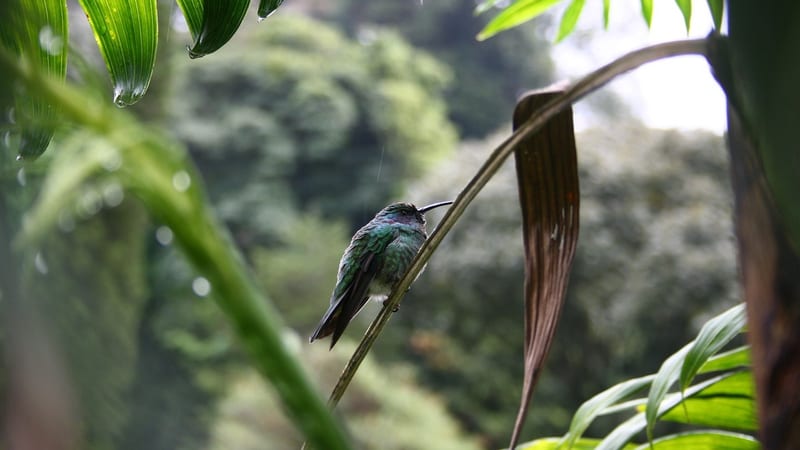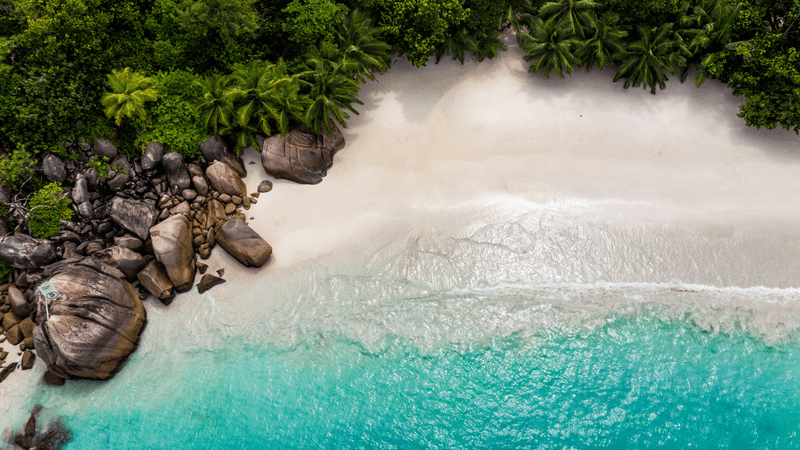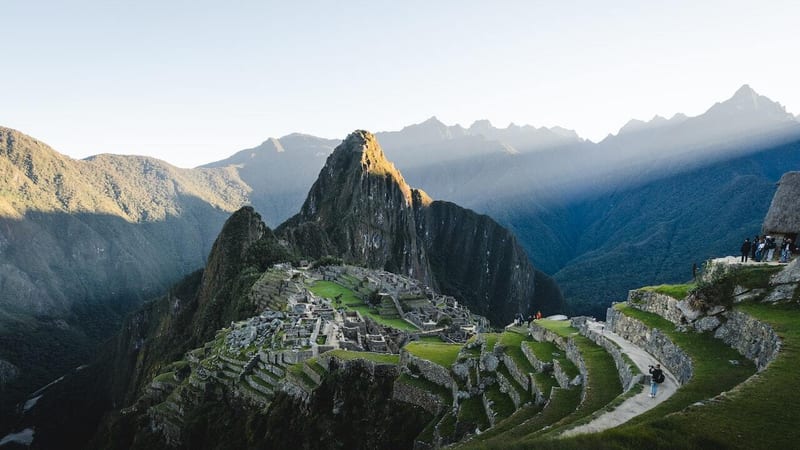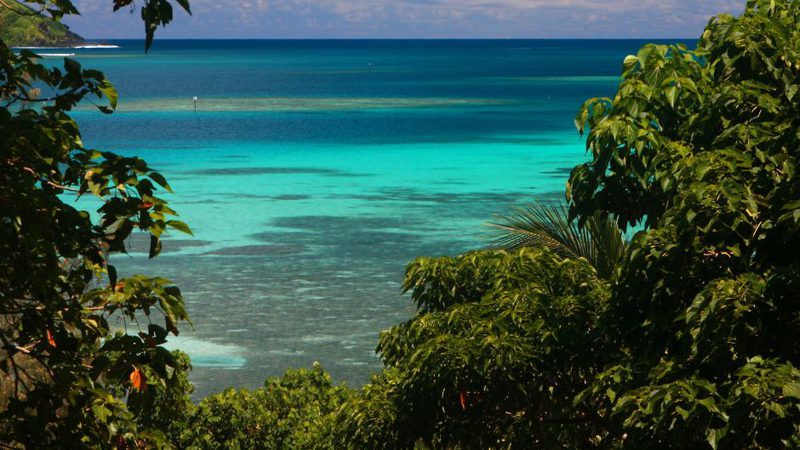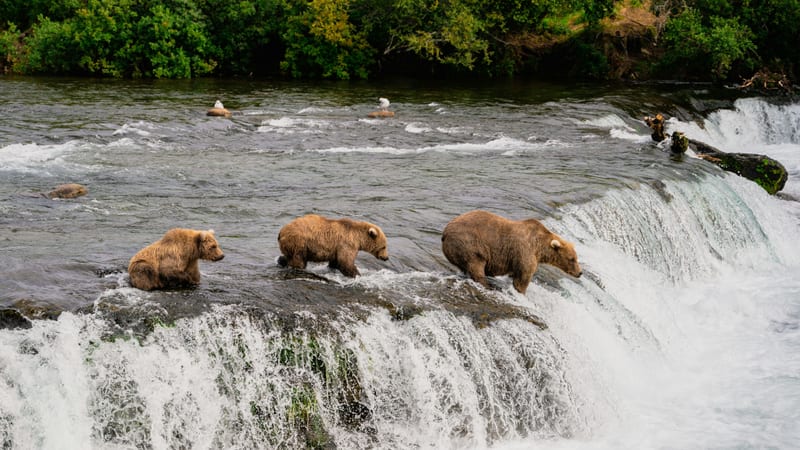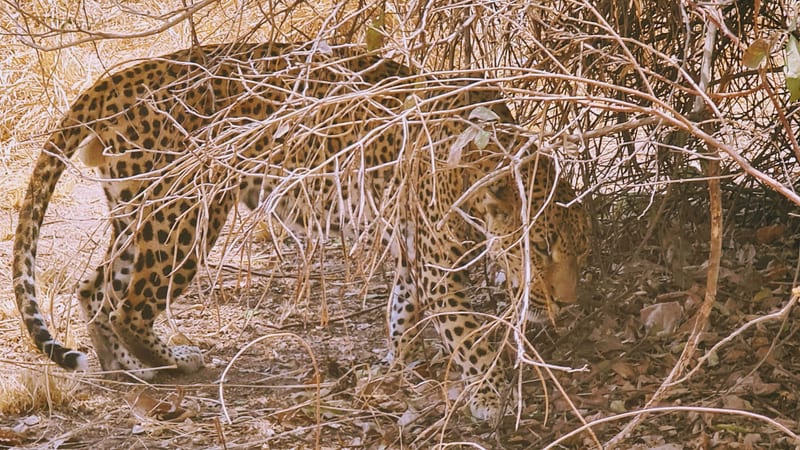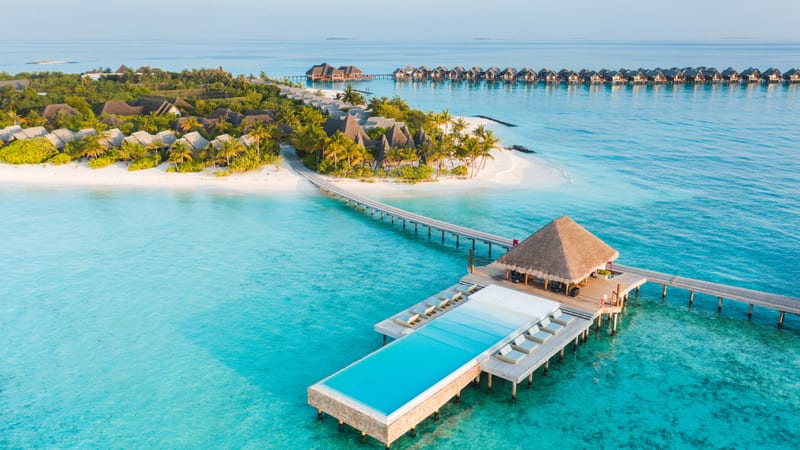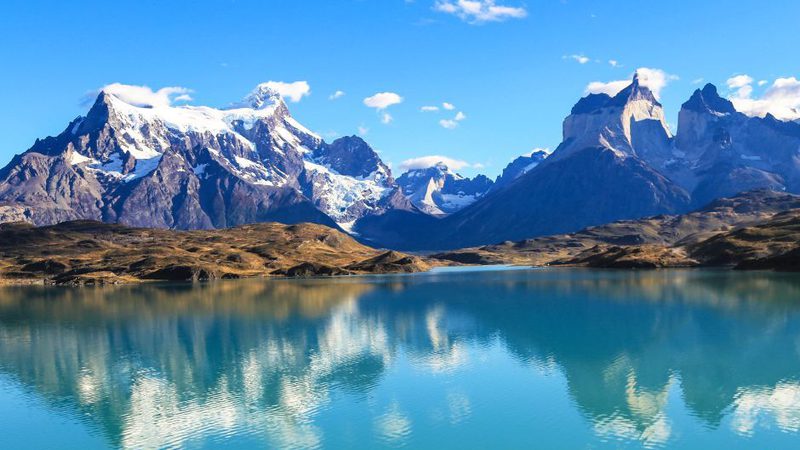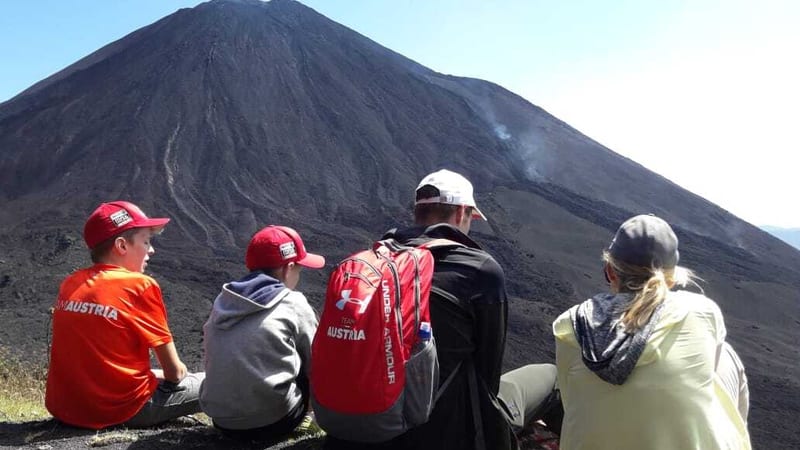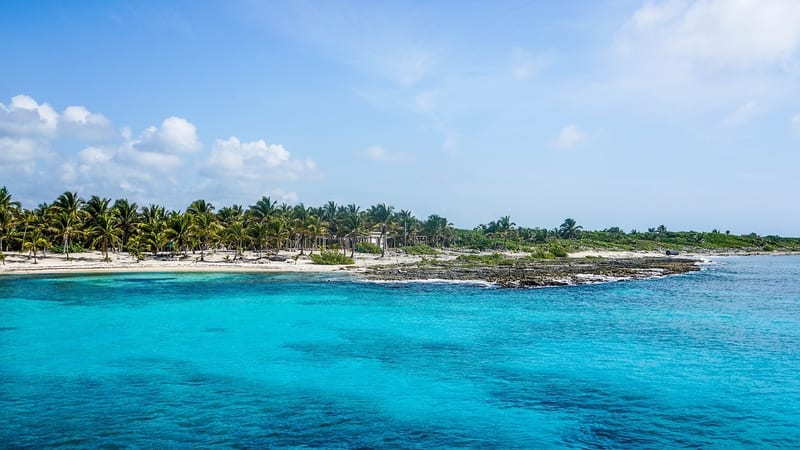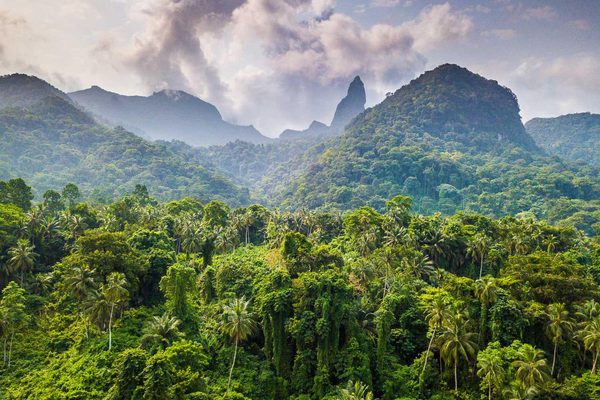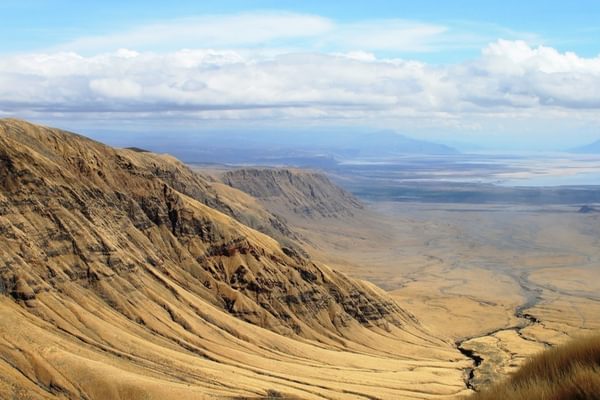Culture, plantations and beaches
Breathe in chocolate-scented air as you wander through tropical plantations, leave footprints on deserted beaches and chat with local fishermen
Floating just two kilometres north of the Equator in the Gulf of Guinea, São Tomé may be compact at 48 km long, but it’s bursting with character. Formed by a vast shield volcano rising from the ocean floor, this island’s terrain is wild and beautiful, dominated by the dramatic spike of Pico Cão Grande. Towering 663 metres above the rainforest canopy, it’s a surreal sight and a highlight of any visit, best viewed from within the lush Obo National Park. São Tomé is also a haven for wildlife lovers, home to rare species found nowhere else on Earth. Birders in particular are drawn to its endemic gems, including the giant sunbird and the critically endangered São Tomé fiscal.
The island’s cultural roots are just as rich. With a blend of Portuguese and Creole heritage and a past shaped by plantations and trade, São Tomé offers an intriguing glimpse into a lesser-known corner of Africa. The rhythm of life is gentle here, with fishing villages and cacao farms dotting the coast and countryside.
With only a trickle of tourists each year, the islands remain refreshingly under the radar. From forest hikes and diving to laid-back beach days and turtle nesting, it’s a place that feels truly special.
São Tomé Trip Inspiration
Best places to stay in São Tomé
Top places to visit in São Tomé
Types of São Tomé holidays
Speak to a São Tomé expert today
and start planning your tailor-made holiday

Ottilie
São Tomé Expert
FAQs About Your São Tomé Holiday
Planning a holiday to São Tomé? Our experts share advice on everything from what to pack, when to go, to tips for families, covering the questions we get asked the most.
What makes São Tomé and Príncipe worth visiting?
This remote two-island nation off the coast of Central Africa is wonderfully untouched by mass tourism. It offers a rare mix of unspoilt beaches, lush rainforest, cocoa plantations, and rich local culture. Visitors come for the tranquillity, the biodiversity, and the feeling of stepping back in time to an Africa that moves at its own slow pace.
When is the best time to visit São Tomé and Príncipe?
The islands are warm year-round, but the best times to visit are the dry seasons: June to September and December to February. These months bring sunny days, calmer seas, and excellent conditions for hiking, snorkelling, and exploring plantations. The wetter months are greener, with more bird activity, but travel can feel more humid.
Is São Tomé and Príncipe good for wildlife?
Yes. The islands are home to several species found nowhere else on Earth, particularly birds, orchids, and amphibians. The surrounding waters are rich in marine life, with turtles nesting on the beaches and whales passing through from July to October. The Obo National Park offers excellent rainforest hiking and birdwatching opportunities.
What kind of beaches can I expect?
São Tomé and Príncipe has some of the most idyllic beaches in Africa, ranging from wide sandy bays to secluded coves fringed with palms. Many are completely undeveloped, meaning you can often have them to yourself. Lagoa Azul and Praia Banana are two of the best-known, but part of the charm is discovering your own quiet stretch of sand.
How easy is it to get around the islands?
São Tomé is the larger and more developed island, with decent road connections, although travel is often slow. Principe is smaller and more remote, with fewer roads and a wilder feel. Flights connect the two islands in under an hour, and many visitors choose to combine both for variety.
Is São Tomé and Príncipe good for hiking?
Absolutely. Hiking is one of the best ways to experience the islands. Trails lead through dense rainforest, past waterfalls, and up volcanic peaks like Pico Cão Grande. Walks can be arranged with local guides, many of whom are passionate about sharing the islands’ natural and cultural heritage.
What is the culture like on the islands?
The islands have a Portuguese colonial heritage blended with African traditions. You’ll find colourful fishing villages, lively music, and a welcoming local population. Food is a highlight, with plenty of fresh seafood, tropical fruit, and chocolate from local cocoa. Portuguese is the official language, though many people also speak local Creole.
Where should I stay in São Tomé and Príncipe?
Accommodation ranges from simple guesthouses to luxury eco-lodges. On Príncipe, Sundy Praia and Roça Sundy are favourites for those looking for style and sustainability. São Tomé offers a wider choice, with plantation houses and boutique hotels providing characterful bases from which to explore.
Is São Tomé and Príncipe a good eco-travel destination?
Yes. Tourism here is still small-scale and carefully managed, with a focus on sustainability. Much of the accommodation is eco-conscious, and both islands are working to protect their unique biodiversity. This makes it an excellent choice for travellers who want to support conservation and responsible travel.
How do I get to São Tomé and Príncipe?
Most visitors fly via Lisbon, with direct flights from the Portuguese capital to São Tomé several times a week. From there, a short domestic flight connects São Tomé with Príncipe. Travel requires a little more effort than more mainstream destinations, but that’s part of why it feels so unspoilt.




